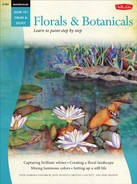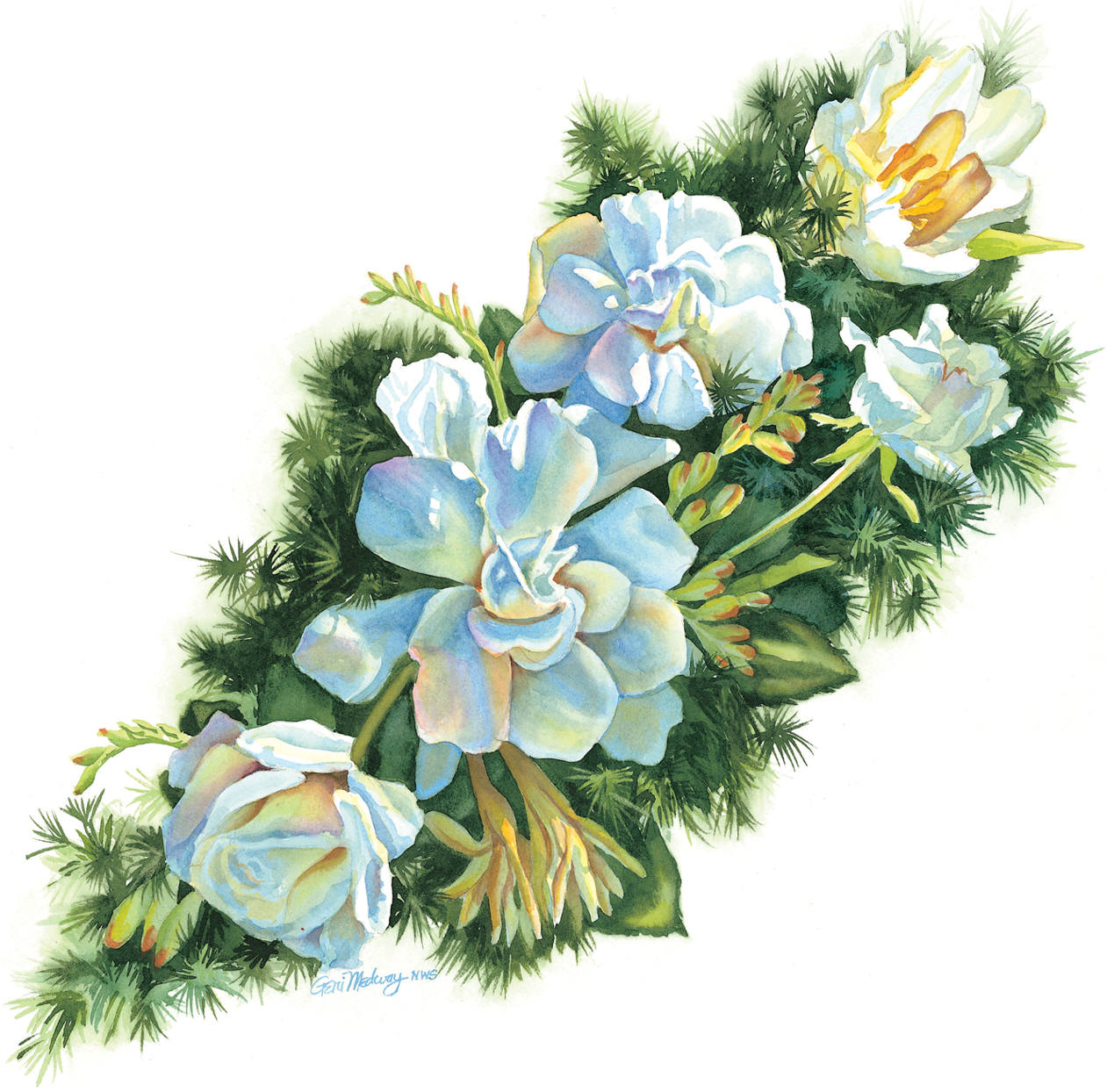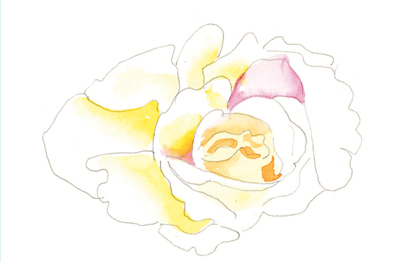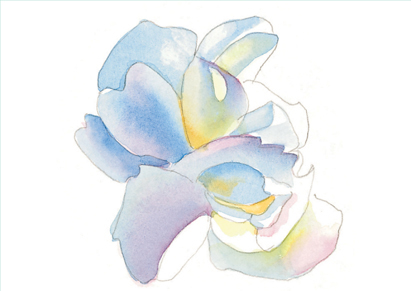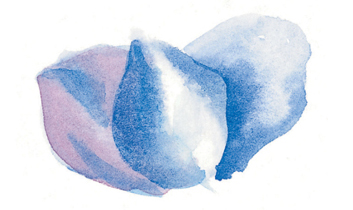with Geri Medway
THE ONLY TIME WHITE TRULY LOOKS WHITE is in a highlight, where the light is hitting the object directly. In other areas, white is really full of reflected colors, taking on tinges of whatever colors are nearby. So when painting a white subject, leave your paper white for highlights, and use your “artistic license” to emphasize any other color you see. If you see some pink in a white petal, really show the pink to create dazzling white flowers!

CREATING SPECIAL EFFECTS Here I use the technique for retrieving light values, lifting the fresh paint out of the dark center with a damp brush to create the spiky needles of the foliage. This lifting technique also can be used for painting cloudlike effects, reflective surfaces, or dandelions gone to seed, to name just a few.

MIXING WHITES All of these colors will appear to be white in shadow areas of a painting if you place them next to a darker value for contrast.
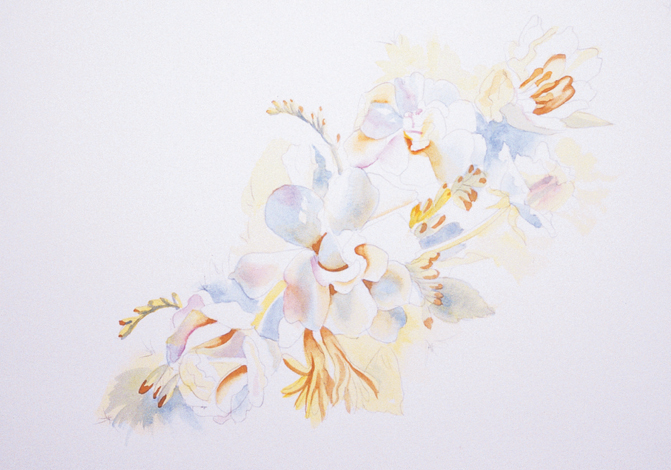
1 I begin my white floral painting with thin washes of cadmium yellow to establish the lightest value areas (where the light is strongest). When that glaze is dry, I add permanent rose and a touch of cadmium orange for the darker edges, then pull away some of the color with clean water in my brush to create a gradated wash—one that “graduates” from dark to light values.
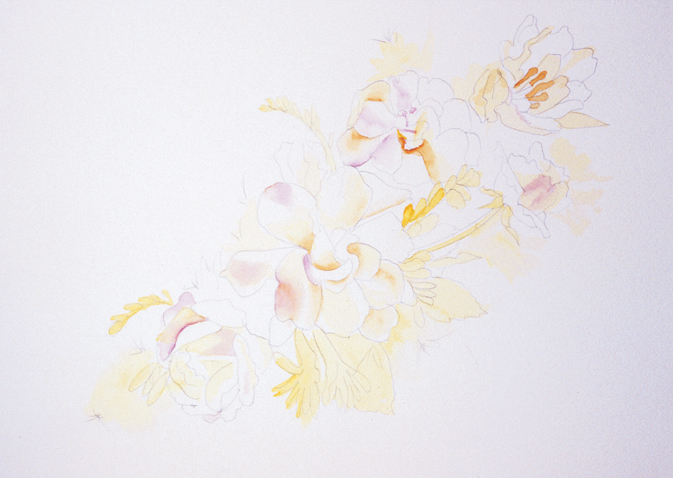
2 The shadows of the white flowers are predominantly blue, so I choose cerulean blue for my first blue glaze, knowing it will glow through the successive layers of cobalt blue and add some depth. For this glaze layer, I use flat washes for areas of even color and gradated washes where I want to show the curve of the petals.
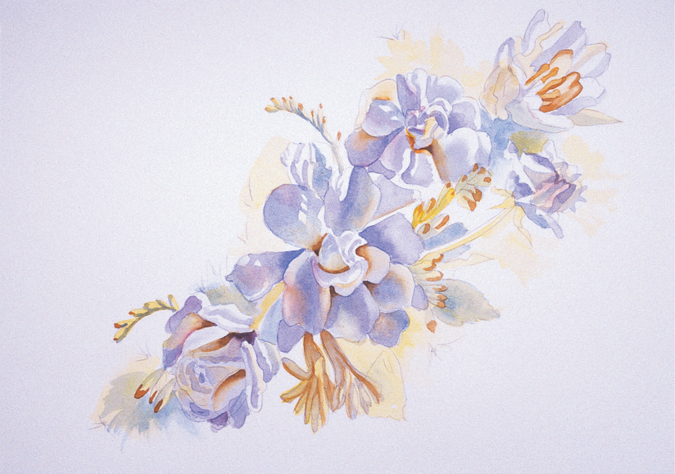
3 The flowers really begin to take shape when I add a glaze of cobalt blue to the shadows. I choose cobalt blue because this pigment easily can be lifted if some areas need to be lightened. (See page 7 for a description of lifting color.) The cool shadows also provide a lively contrast with the warmer yellows and oranges.
4 The drama unfolds with the addition of deep greens around the flowers. I add phthalo blue to sap green, darkening the mixture with a bit of alizarin crimson. This also is where I use the handy lifting technique for retrieving light values to create the light and medium greens of the pine needle spray. Now look again at the previous step where the flowers looked very blue, and see the difference that adding a darker value makes—here the flowers look noticeably whiter!
